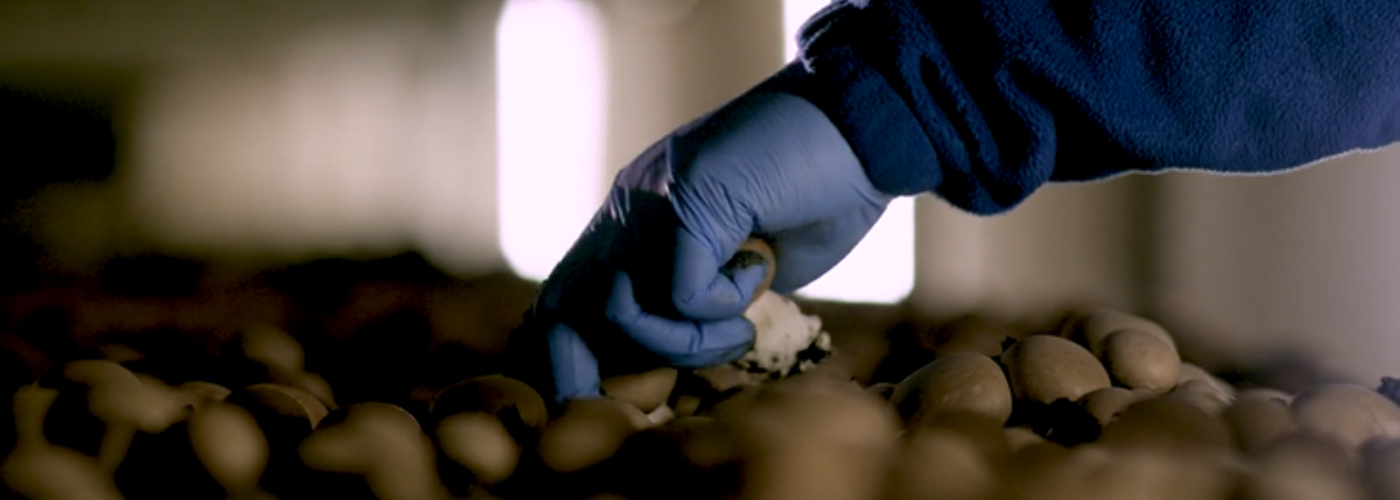Mushroom harvesting may not be the first career choice that springs to mind, but it’s a fascinating and essential job in the world of agriculture, especially at Highline Mushrooms. To gain some insight into the world of mushroom harvesting, we sat down with William and Davis-Anthony, experienced harvesters at Highline Mushrooms. Here’s what they had to say about their typical day, the tools they use, the challenges they face, and their advice for budding mushroom enthusiasts.
A Typical Day of a Mushroom Harvester
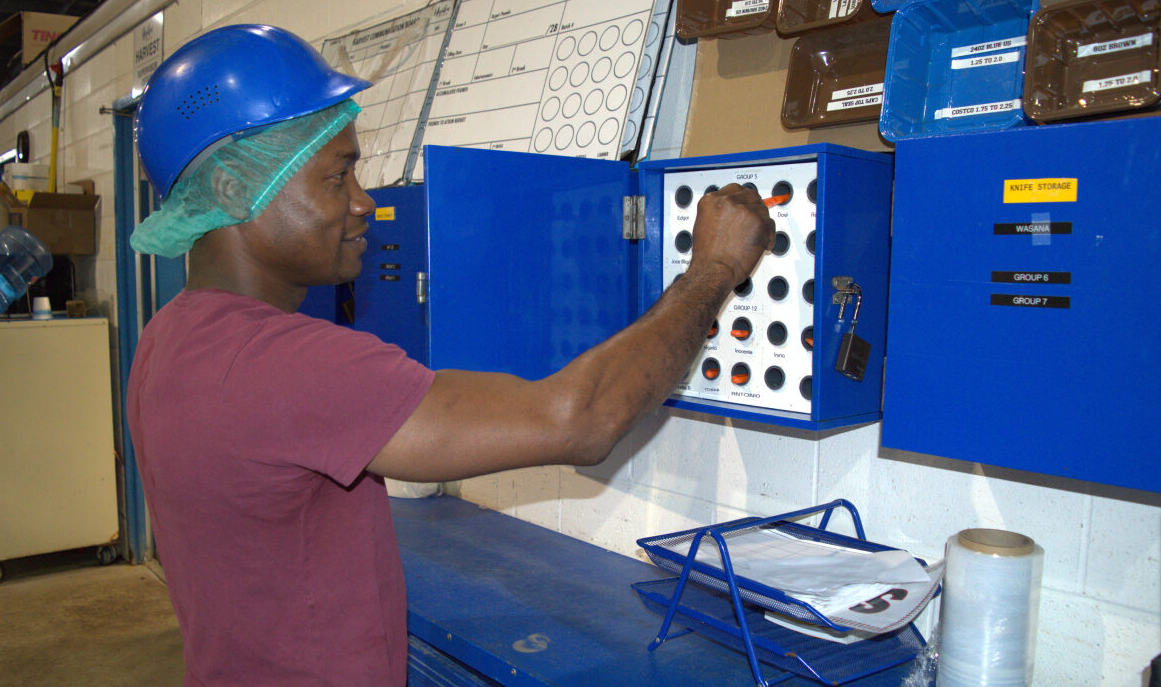
The life of a mushroom harvester at Highline Mushrooms begins early. The first order of business is to punch in and check the product board. The product board informs them of which room they’ll be working in for the day, setting the stage for their daily harvest. Dressed in an apron, they pick up their essential tools: a picker, a knife, and gloves.
The picker, an intriguing contraption, holds trays on top to facilitate mushroom collection. This clever invention saves harvesters from the physical strain of holding the trays themselves. A supervisor provides instructions on the specific size of mushrooms to pick, based on the orders for the day. Harvesters also consult a sheet that provides information about which rows to pick and order details.
Efficiency is crucial in mushroom harvesting. Observing the rows and even other trollies helps harvesters maximize their yield. Each house (mushroom-growing area) varies based on factors like timing, size, and mushroom types. After carefully assessing the situation, they begin cutting the mushrooms to meet specifications.
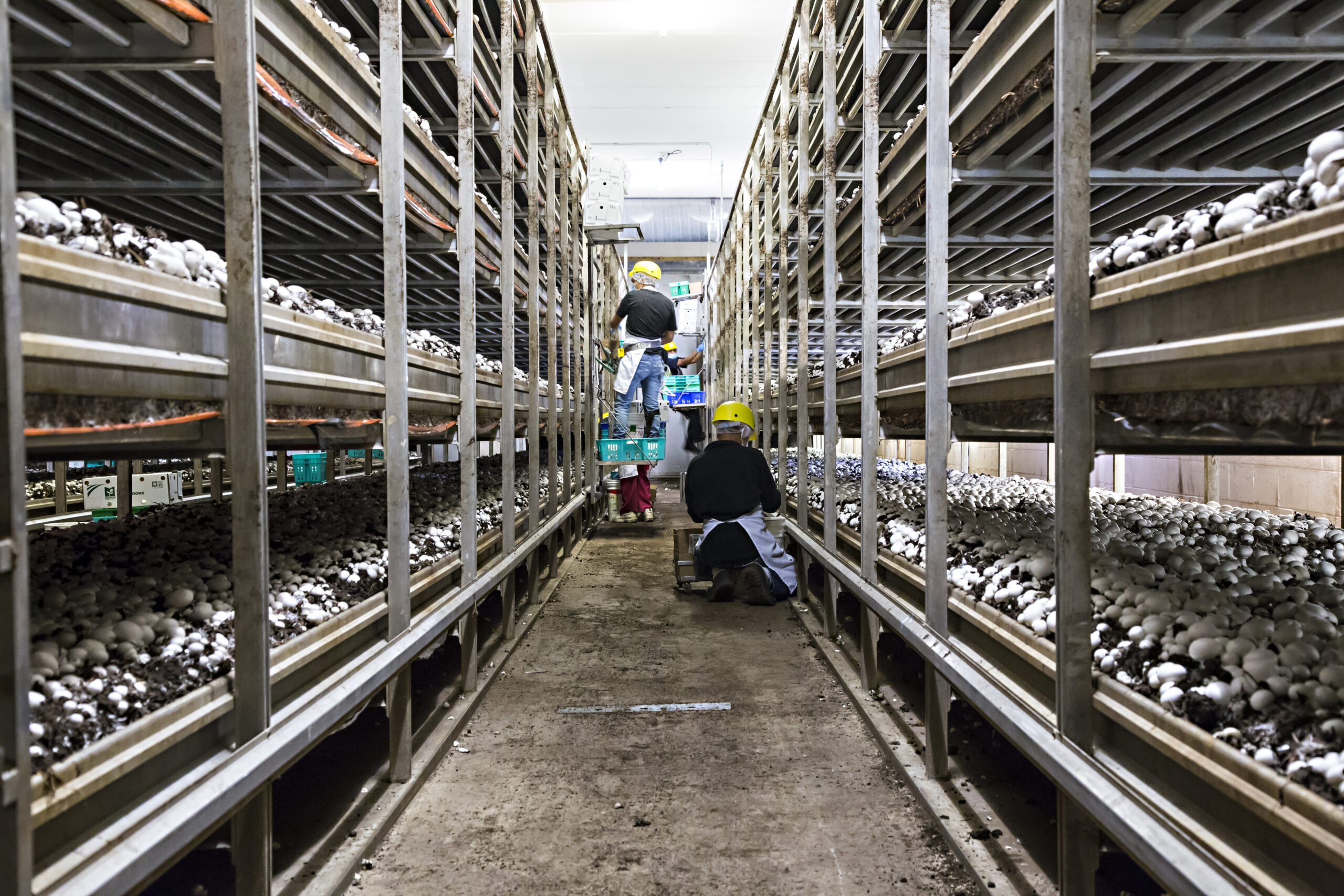
Every day is a new adventure in mushroom harvesting, as each house and type presents unique challenges. The quality of the compost, environmental conditions, and the age of the beds all play a role in determining the harvest.
Harvesters must be vigilant about preventing overcrowding. Separating mushrooms is essential to avoid damage, which can impact the overall yield. On a good day, they might harvest 500 to 600 pounds, while a very good day can see a staggering 1000 to 1200 pounds from a single house.
The first day of a new crop usually results in a lower yield as the harvesters separate mushrooms and remove buttons. But by the second day, they hit their stride, with higher volumes harvested. Mushroom beds are typically in rooms for 12 to 14 days, with the first day of harvest on day 12. If the compost quality is excellent, they might even start harvesting on the 6th day, focusing on number 2 mushrooms.
Once the hard work is done, harvesters remove their harness, picker, and knife, and head to the clean station. Here, they use diluted chlorine water and a scrubber to ensure cleanliness. Finally, the day ends with dropping the apron off in the dirty bin and punching out.
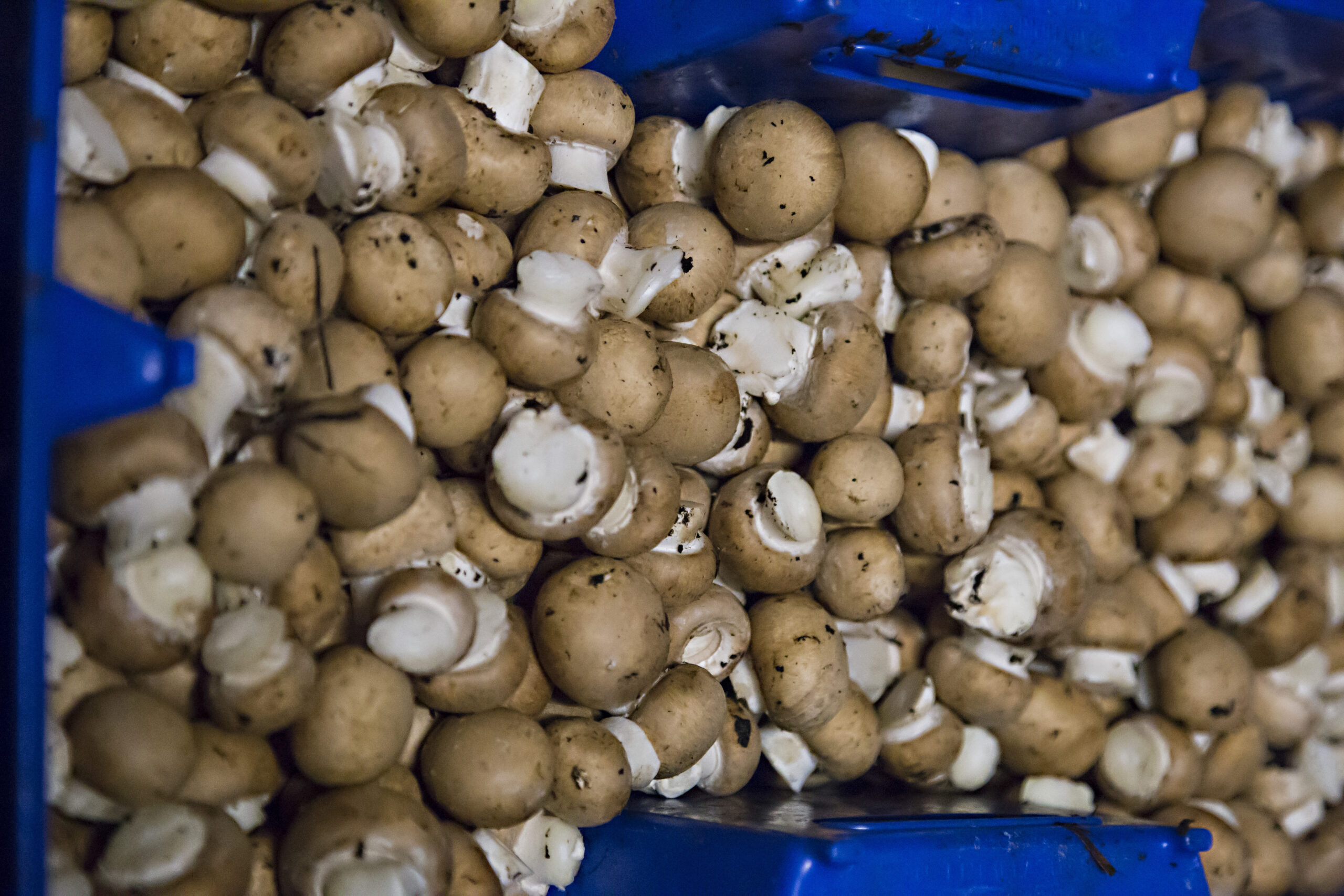
Why Mushroom Harvesting as a Career?
For many mushroom harvesters, their journey into the field begins with the Temporary Foreign Worker Program. But what makes them stay? William has been at it for a decade and finds the job intriguing due to the strategy and intelligence it demands. It’s more than just picking mushrooms; it’s about understanding the nuances in the mushroom growing process.
Special Tools and Equipment:
Harvesters rely on specialized tools like a curved knife, which is crucial for precision and safety. The curve of the knife is designed to allow them to hold mushrooms properly, minimizing the risk of self-injury. Additionally, they use a harness for their safety on trollies, which is essential to prevent slipping.
Challenges and How They Are Overcome
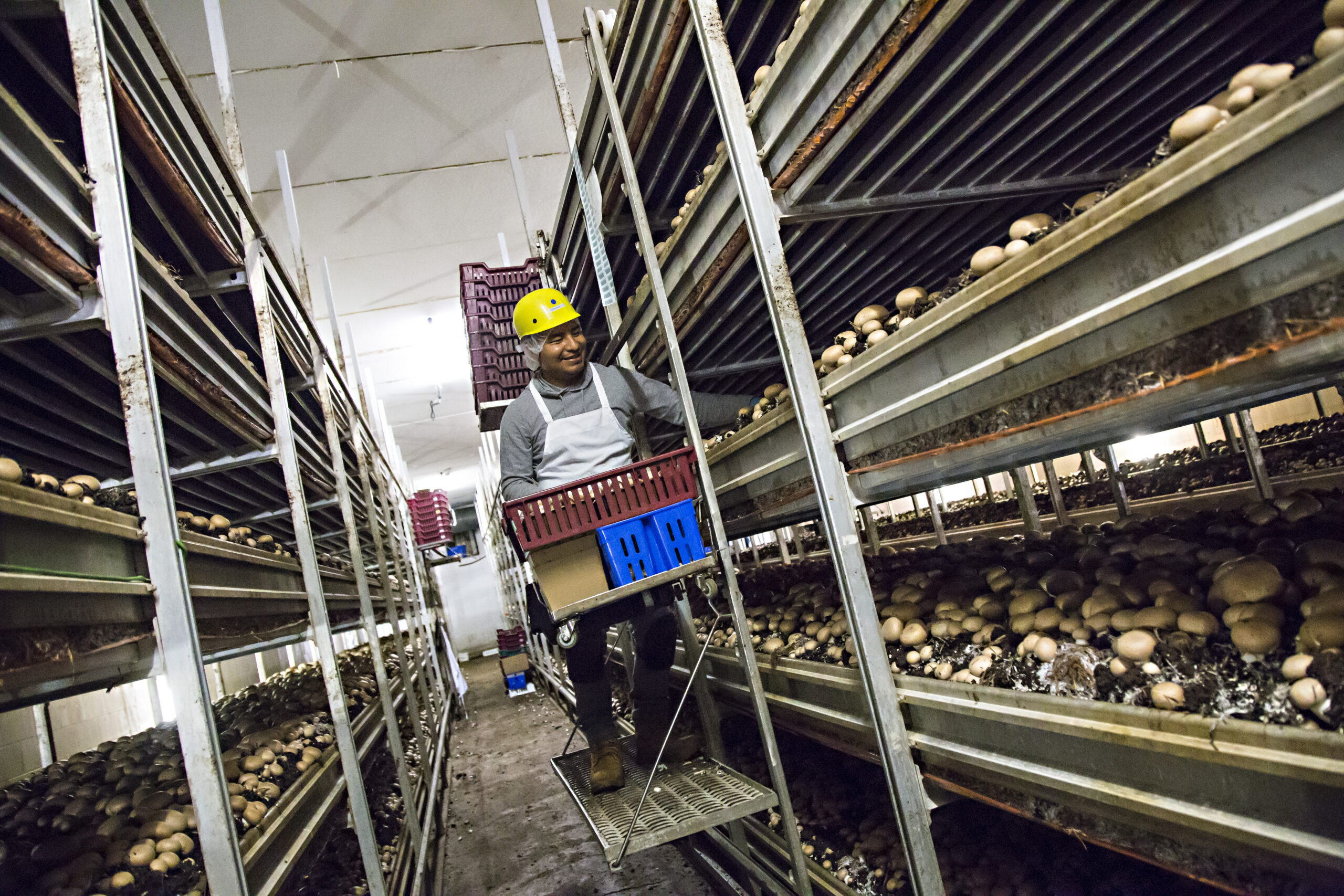
Challenges in the world of mushroom harvesting can include spotting mushrooms that could stain others with moisture drops, and meeting specific mushroom specifications. Overcoming these challenges requires a keen eye, attention to detail, and an unwavering commitment to quality.
Safety Measures:
Safety is paramount. Harvesters ensure their trollies are positioned correctly and their harnesses are secure. They also maintain clear communication with colleagues on the floor, waiting for their signal before moving to avoid accidents.
Quality and Freshness:
While they can’t control the freshness entirely, harvesters handle the mushrooms with great care. Precise cutting and gentle placement in the harvest trays help preserve the quality of the mushrooms.
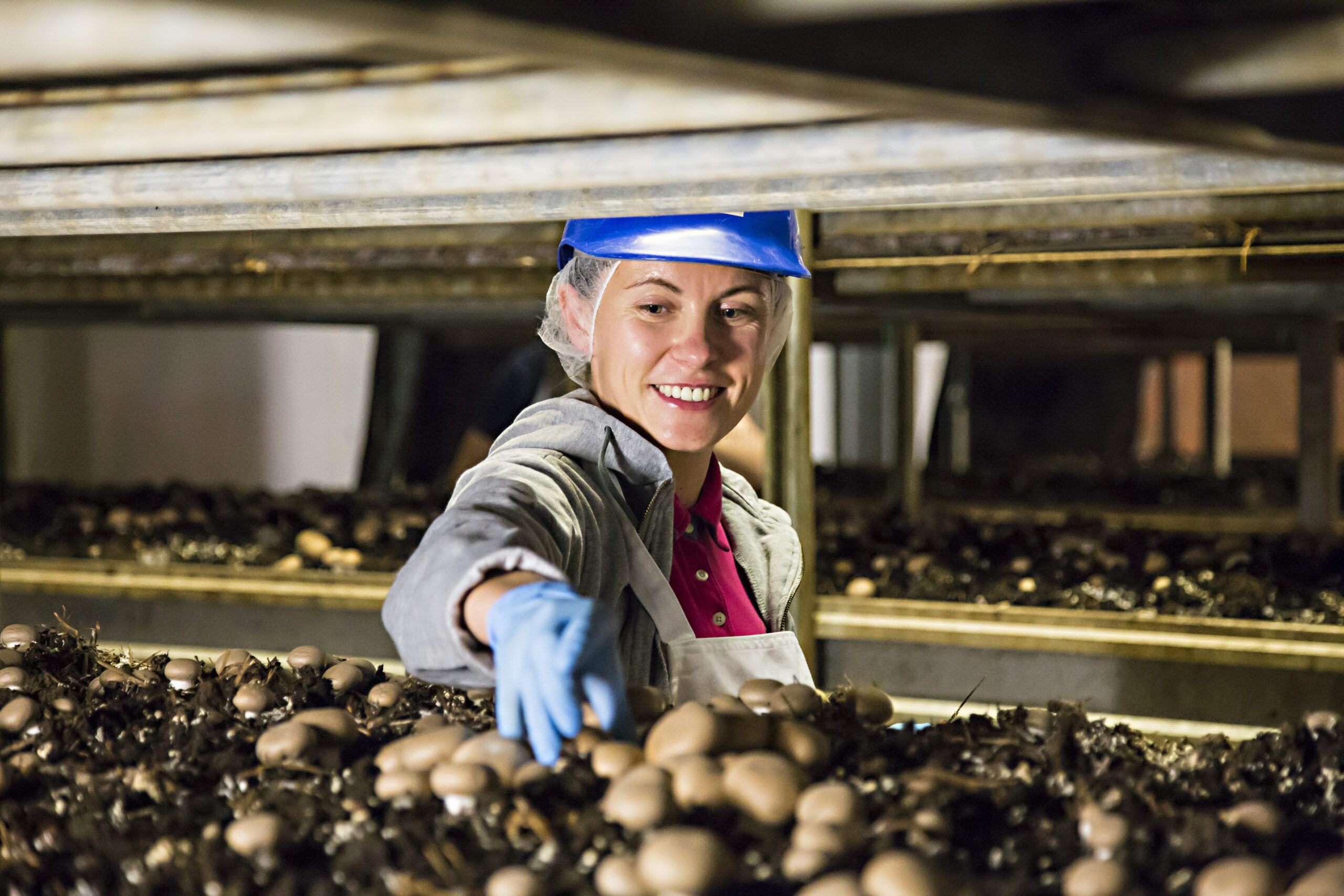
Seasonal Variations:
Mushroom harvesting varies with the seasons. Winter brings higher production due to cooler temperatures, while the summer, with its warmer weather, makes mushrooms grow faster but also spoil more quickly, making it more challenging to obtain top-quality mushrooms.
Advice for Aspiring Mushroom Harvesters:
Learning the art of sizing, mastering proper separation techniques, and practicing these skills are key pieces of advice. Mushroom harvesting is a quiet and rewarding job, one that you can grow to love over time.
Innovations in Mushroom Harvesting:
The world of mushroom harvesting has evolved significantly. In the past, they focused primarily on big mushrooms with fewer specifications. However, the introduction of the separating method has made a significant impact, especially in the case of white mushrooms. Efficiency has increased as a result.
Mushroom Harvesting: A Beautiful Process
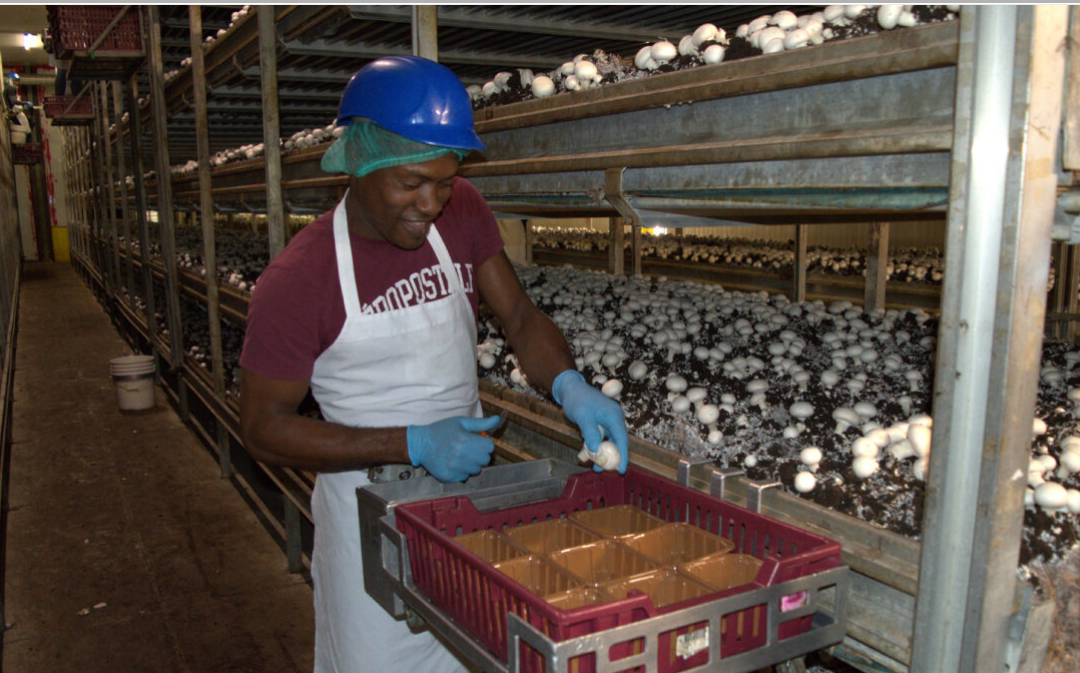
While mushroom harvesting might not be the most glamorous job, it’s one of the most important at Highline Mushrooms. Success in this field ultimately depends on the person performing the work and the relationship between management and workers.
So, the next time you savor the earthy flavors of a mushroom dish, remember the hard work and dedication that goes into every harvest. Mushroom harvesting might be an unconventional career, but it’s a labor of love for those who’ve found their place in this unique world.

